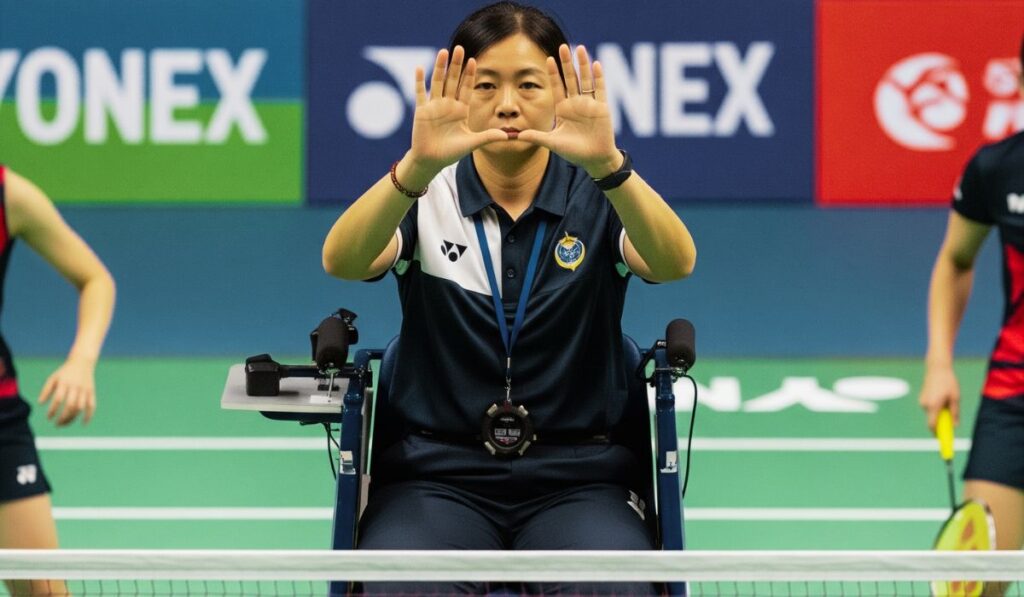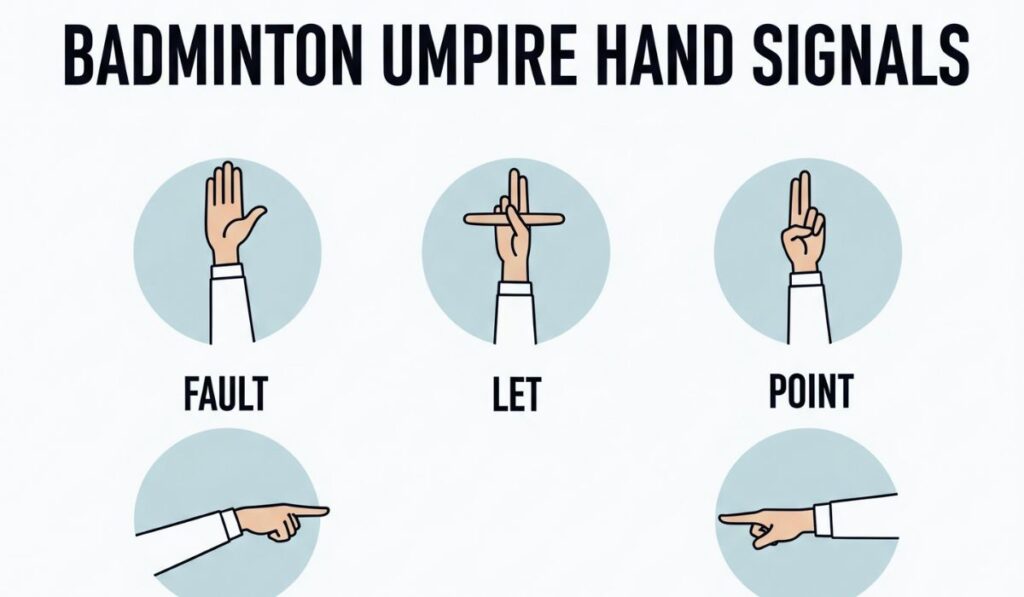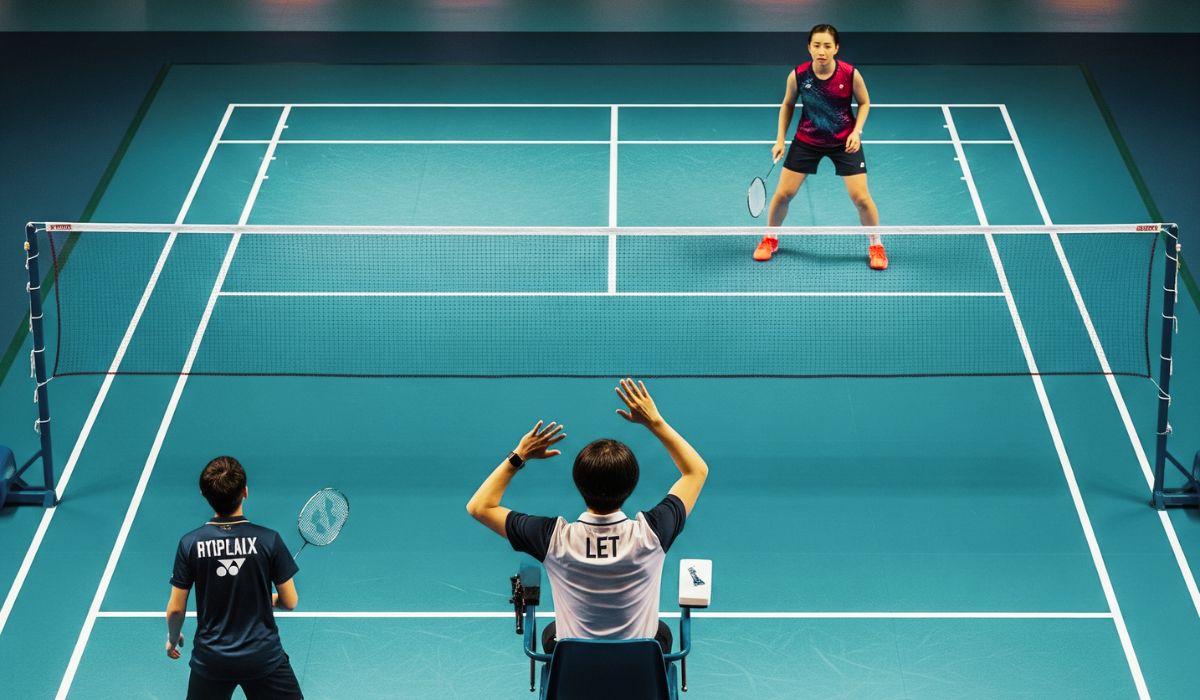“Caught Off Guard? The Surprising Badminton Umpire Rules That Can Make or Break Your Match”
The Invisible Hands That Control the Game
When the shuttlecock soars through the air with that feathery whisper, most eyes are locked on the players. But behind every thrilling rally, every gasp from the audience, and every decisive point, there is a silent authority – the badminton umpire. They are not just rule enforcers. They are the heartbeat of fairness, the guardians of order, and, sometimes, the difference between glory and heartbreak. Understanding the badminton umpire rules is not just about knowing what they can and cannot do. It’s about reading the soul of the sport.
Why Umpire Rules Can Make or Break Your Match
Many players train tirelessly, fine-tuning their smashes, drop shots, and net play. Yet, when it comes to the heat of competition, a misunderstanding of umpire calls can crush even the most skilled athlete’s spirit. The rules are not just words in a handbook; they are the invisible threads that weave the game together. If you break them, intentionally or by accident, the Badminton umpire rules will fall like a gavel – final and unquestionable.
The Authority of the Chair
In badminton, the umpire sits in a high chair, quite literally above the action. This elevated position is symbolic – they oversee everything, with eyes trained on both players and the shuttle’s every movement. Their job is to interpret and apply the Badminton umpire rules without bias. From calling faults to managing disputes, their rulings stand unless overruled by the referee.
The Power of the First Serve
The Badminton umpire rules control begins before the first rally. They decide who serves first and from which side of the court the game begins. This decision, often determined by a coin toss, may seem small. But seasoned players know – the first serve can set the tone for the entire match.
The Rulebook They Live By
Badminton umpire rules don’t make decisions based on personal feelings or fleeting judgments. They live and breathe the official Badminton World Federation (BWF) rules. Every call – whether it’s a service fault, a net touch, or a shuttle out of bounds – is backed by a section in the law book. This precision keeps the game consistent across every level, from local tournaments to the Olympic stage.

The Seduction of Fairness
There’s something almost intoxicating about the purity of a fair game. The Badminton umpire rules role is to protect that purity. When they raise their hand to announce a fault or award a point, it is not just a gesture – it is a promise that the match will be decided by skill, not by chaos.
Service Faults and Their Consequences
One of the most frequent calls an Badminton umpire rules makes involves service faults. Serving above the waist, flicking the wrist in the wrong motion, or stepping over the line can all trigger the umpire’s intervention. These small infractions might seem harmless, but in a tight match, they can be devastating.
Line Calls – The Art of Precision
While line judges are often responsible for determining whether the shuttle lands in or out, the umpire has the authority to overrule them if they believe an error has been made. This requires exceptional focus, as one incorrect call can change the course of a game.
Player Behavior and Warnings
Badminton umpire rules is not just about physical skill – it’s about respect. The umpire is quick to issue warnings for unsportsmanlike behavior, such as delaying play, throwing equipment, or speaking aggressively to opponents. Persistent misconduct can lead to fault calls, point deductions, or even disqualification.
The Umpire’s Partnership with Other Officials
Although they hold great authority, Badminton umpire rules are part of a team. They work closely with service judges, line judges, and referees to ensure the match runs smoothly. This collaboration allows the game to maintain flow while ensuring accuracy.
The Emotional Weight of Decisions
Every Badminton umpire rules knows the weight of their role. A single decision can ignite cheers from one side of the stadium and boos from the other. They must stand firm, unshaken by the emotions swirling around them, anchored in the certainty of the rules.
Handling Disputes with Calm Authority
Disputes are inevitable in competitive sport. When a player challenges a call or seeks clarification, the umpire’s response must be calm, clear, and unyielding. They are the steady voice in a sea of adrenaline.
The Beauty of Consistency
What separates a good umpire from a great one is consistency. Players must feel that every call – from the first rally to match point – is judged by the same standard. This reliability builds trust and makes the game more enjoyable for everyone.
The Physical Demands of the Role
People often underestimate the umpire’s physical demands. Sitting in the chair for hours, tracking the shuttle’s blistering speed, and making split-second judgments require stamina, concentration, and discipline.
The Respect They Command
True athletes understand that the Badminton umpire rules is not an obstacle but an ally in preserving the integrity of the game. When you respect the badminton umpire rules, you’re not just avoiding penalties – you’re honoring the very spirit of the sport.
The Quiet Authority of the Umpire’s Voice
There’s a certain weight in the voice of a Badminton umpire rules that cannot be taught—it’s not just loudness, but a kind of steady conviction that seeps into every syllable. When an umpire calls “Service over,” the sound doesn’t just reach the ears—it strikes the heart. It commands both the feather-light shuttle and the pounding pulse of the players. This vocal authority is the bridge between rules on paper and rules in action, a reminder that sport is as much about discipline as it is about flair.
The Watchful Eyes Above the Court
Standing above the game on their high chair, the umpire becomes a silent guardian. From this elevated throne, they see the dance of every shuttle, the flicker of every wrist, and the subtle shift of a player’s foot. It’s a view of beauty and chaos intertwined—a perspective where every rally is a battle, every point a small war, and yet, they must remain unshaken, impartial, and unyielding.
The Rhythm Between Whistle and Silence
There is a rhythm in Badminton umpire rules that few notice. The crisp blow of the whistle or the sharp call breaks the air, only to be followed by the deep, almost sacred silence before the serve. This ebb and flow is the heartbeat of a match—an emotional tug between calm focus and electrifying tension. The umpire controls that heartbeat, ensuring it never races too fast or slows too much.
The Scent of the Court Under Pressure
Even in the most pristine stadium, there’s an unmistakable scent when the game grows heated—polished wood mixed with sweat and adrenaline. For the Badminton umpire rules, this aroma is as much a part of the match as the scoreboard. It’s the scent of athletes pushing boundaries, of matches that could tip in either direction, and of moments that might one day be remembered as history.
Rules Written in Ink, Enforced in Flesh and Bone
Badminton umpire rules may live in manuals and handbooks, but in the real game, they are living, breathing things—enforced through the human presence of the Badminton umpire rules. There’s nothing cold or mechanical about it. Every decision carries the warmth of human judgment and the weight of responsibility, knowing that a single call can lift one player’s dream and shatter another’s.
The Subtle Art of Anticipation
An experienced Badminton umpire rules doesn’t just watch the shuttle—they sense the match. They feel when a rally is building toward something spectacular or when a player’s frustration might boil over. This foresight allows them to step in at the perfect moment, not to interfere, but to preserve the purity of the competition.
The Touch of the Rulebook on the Heart
Holding the official Badminton rulebook is like holding a sacred text. It may be bound in paper, but for an umpire, it holds the soul of the game. Each clause, each phrase, is more than law—it’s a promise to uphold the beauty of badminton by keeping it fair and just, no matter the stage, no matter the stakes.
Moments When the Crowd Holds Its Breath
There are moments when the Badminton umpire rules raises a hand, and the entire arena freezes. You can almost hear the collective inhale of the crowd—thousands of hearts suspended in uncertainty. In those seconds, the umpire’s authority feels absolute, as though time itself is waiting for their judgment.
The Elegance of Hand Signals
To the untrained eye, the Badminton umpire rules hand signals might seem like simple gestures. But each movement—whether a palm raised for fault, a sweep of the arm for service over—carries decades of tradition. The motions are sharp, clear, and beautiful, almost like a dance layered over the game’s own choreography.
How Umpires Weather the Storm of Emotions
In a sport as fast and fiery as badminton, emotions flare—sometimes violently. An Badminton umpire rules role isn’t just to enforce rules but to be the calm in the storm. They absorb the frustration, the desperate appeals, the protests—never letting the storm bend their resolve. They are the anchor, grounding the match in order.
The Electric Moment of a Close Call
Every umpire knows the weight of a close call. A shuttle clipping the line by a hair can decide not just a game, but a career. In that split second, the umpire must be both lightning-fast and unshakably sure, delivering a decision with a voice that does not tremble.
The Sound of Respect in a Player’s Eyes
Respect isn’t always verbal—it’s in the way a player meets the umpire’s gaze after a fair call. It’s in the slight nod, the absence of complaint, the acceptance of judgment. This unspoken exchange is one of the most rewarding aspects of the job, proof that fairness still commands honor in sport.

Umpires as Protectors of Sportsmanship
An umpire doesn’t just guard the rules—they guard the spirit of the game. When tempers flare or gamesmanship edges toward cheating, the umpire steps in, not as a tyrant, but as a protector. They remind players, with words or warnings, that victory means nothing if it’s not earned with integrity.
The Tension of Match Point Decisions
Match points are heavy things—they carry the weight of entire tournaments. When a disputed point falls into the umpire’s lap at such a moment, it’s like holding a live wire. The air crackles, the crowd murmurs, and yet, the umpire’s call must come clean and precise, slicing through the tension like a blade.
The Warmth of the Game’s Rituals
There’s something deeply human in the rituals that surround a match—the coin toss, the handshake, the polite announcements. Umpires are at the center of these small moments, and they give the sport its sense of ceremony, making every match feel like an occasion worth remembering.
The Balancing Act Between Firmness and Grace
Badminton umpires walk a tightrope—firm enough to keep order, graceful enough to keep the match flowing. This balance is an art form, requiring not just knowledge of the rules but empathy for the players and an understanding of the crowd’s emotions.
When Silence Speaks Louder Than Words
Sometimes, the most powerful thing an umpire can do is say nothing. A silent pause, a steady gaze—these can communicate as much authority as any call. It’s a quiet reminder to players that the court is a place of respect and focus.
The Invisible Pressure of Perfection
Unlike players, umpires are not allowed to make mistakes—or so it feels. Every slip is magnified, every hesitation noticed. This invisible pressure shapes them into some of the most disciplined, detail-oriented professionals in sport.
The Connection Between Player and Umpire
Though they seem like opposing forces—one enforcing, the other competing—there’s a strange camaraderie between players and umpires. Both know the grind, the preparation, the love for the game. In their own way, they are partners in creating the drama and beauty of badminton.
The Last Call of the Night
When the final shuttle falls and the umpire calls “Game,” it’s more than an end—it’s a curtain closing. The echoes of the match linger in the air, and for the umpire, there’s a quiet satisfaction in knowing they guided it fairly from first serve to last point.

